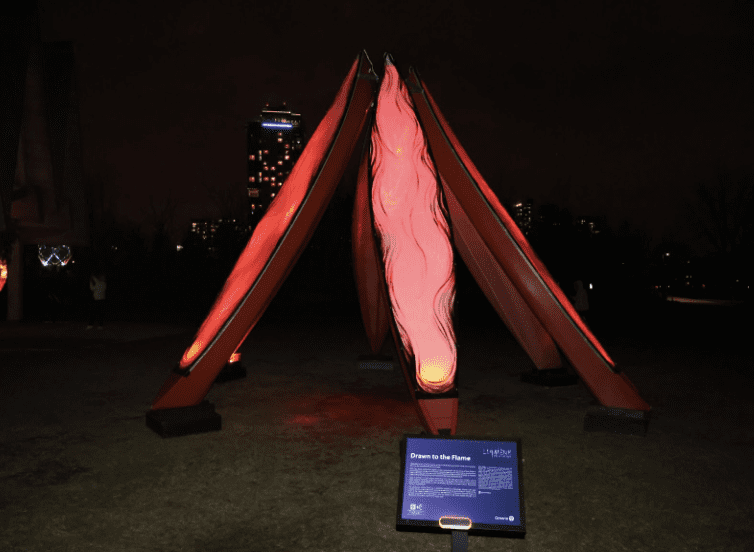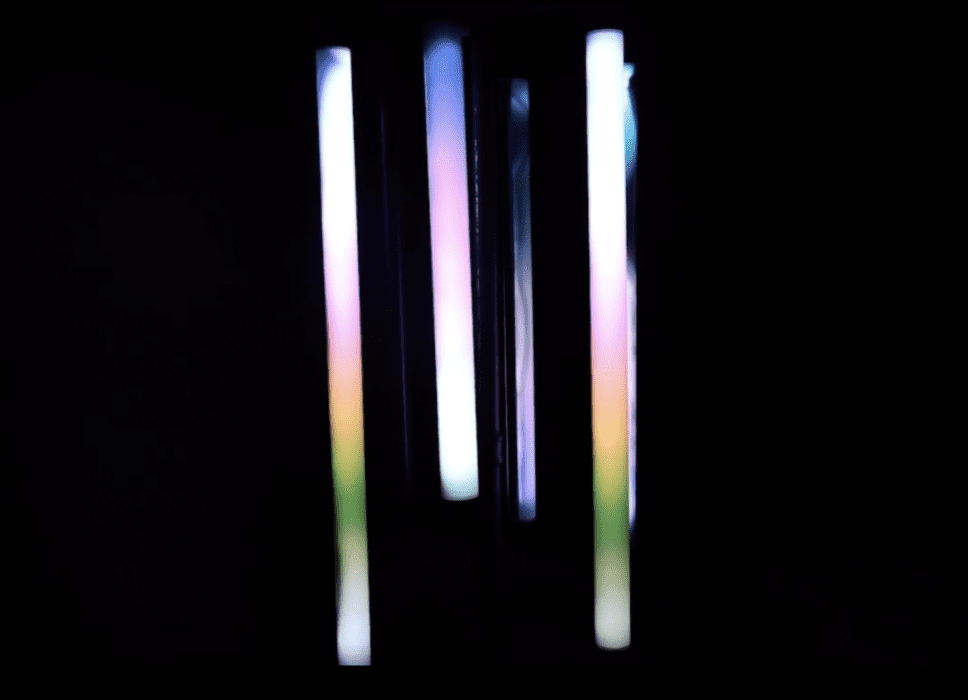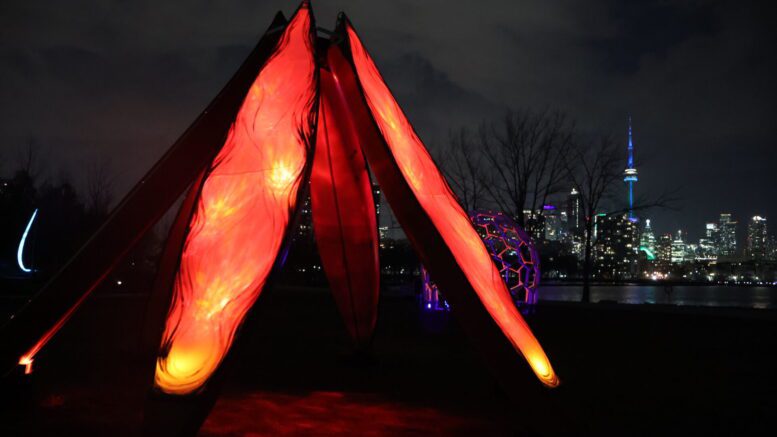This month, you can take a serene evening stroll along Toronto’s waterfront along a path of glimmering art installations that rustle in the wind. As you follow winding trails and bridges, you can hear the sound of a crackling bonfire and waves crashing against the shoreline while taking in a picturesque view of the city’s skyline.
Lumière: The Art of Light is taking place at Trillium Park from March 12 to April 20 with 17 pieces of art, featuring the work of a variety of Toronto artists. This year, the theme of “connections” explores the many ways that light can create connections between people, the environment and aspects of our lives.
WATCH | 3 Toronto artists describe how their pieces illuminate connections in the city:
The exhibition highlights pressing topics from environmentalism to Indigenous reconciliation. The Toronto Observer spoke with three artists to learn more about their contributions.
Click the plus signs on the map for more:
“Drawn to the Flame” by John Notten

John Notten, a Toronto artist and educator, said he wanted to fuse the image of a campfire with upstanding logs in flames with the image of the canoe.
“They’re both beautiful, but they also can burn. That’s why I put them together,” said Notten.
“A campfire is great for warmth, comfort, cooking, and bringing people together with its warm glow. So it has these incredibly positive aspects to it, but fire, of course, can be very dangerous, and can hurt, can kill, can burn down a town, as we all know, in recent years especially, so there’s a duality to the fire.”
Notten was referring to the record-shattering wildfire season in 2023, which affected all 13 provinces and territories.
Canada’s 2023 wildfire season was the most destructive to ever be recorded, doubling the 1989 record. The fires were widespread, from the West Coast to the Atlantic provinces, and the North.
By September, more than 6,132 fires had torched an astonishing 16.5 million hectares of land, as opposed to the standard average of 2.5 million hectares of land consumed in the country each year.

A message of Indigenous reconciliation on Ontario Place grounds (Melanie Kalogirou/Toronto Observer)
Notten added that he believed there’s another side to the canoe as it played a part in settler colonialism and the history of developing this nation-building project of Canada.
“When Europeans first saw this Indigenous technology I’m sure their eyes lit up and they said, ‘This will be a wonderful way that we can access parts of the landscape that we, up until now, had not been able to access,'” he said.
“The canoe gave them access, and access gave them the opportunity to extract resources to displace people, to engage in the fur trade for example, that challenged the landscape’s resources.”
“Drawn to the Flame” exemplifies that despite this part of Canadian history, the canoe remains a tool and symbol of Indigenous resilience.
Nature’s Glow by Mike Geiger

“Nature’s Glow” by Mike Geiger (Melanie Kalogirou/Toronto Observer)
Toronto creator and animation artist Mike Geiger, best known for his role as an animator of the award-winning TV show, SpongeBob SquarePants, designed the piece “Nature’s Glow” to symbolize a forest spirit’s “serene, watchful presence connects us to the nurturing forces of nature, reminding us of our intrinsic bond with the environment and the unseen forces that protect and surround it.”
“I just wanted to create something that was fun to look at, for kids and adults and then maybe that fun would translate into the theme, that we’re a part of the same world, we’re part of our environment, whether we’re in a city or not,” Geiger said.
Environmentalism, actions or advocacy that limit negative human impacts on the environment, can be a heavy topic to tackle, he added.
“I have an eight-year-old kid … It’s tricky to be like, ‘Yeah, we got to recycle, or we’re doomed,'” said Geiger.
“So for me, I was like, well, let’s just try to make it fun and inviting. And then maybe the message doesn’t have to be so hard-handed.:
Lumen: Air by Meghan Cheng

“Lumen: Air” by Meghan Cheng (Melanie Kalogirou/Toronto Observer)
Creative technologist Meghan Cheng said her interactive art installation “Lumen: Air” is an “abstract representation of a wind chime in which the lights, animation, and soundscape that you hear are controlled by the speed of the wind in real-time, based on an anemometer, which is a wind speed sensor.”
“When I was first thinking about Ontario Place, right by the lake, I thought about the winds, the wind is very prevalent there,” she said.
“When I was researching the wind and connections, I came across these global winds and I liked the idea that my friends and family across the world could have shared experiences, despite the big difference between us. So I decided to make an interactive light and sound installation that resembles a wind chime.”
Read more from the Toronto Observer:
- Toronto Film Week celebrates independent voices in cinema
- United Way’s art initiative allows Scarborough artists a chance to shine
- Life drawing evenings bring art lovers and students together
Global wind systems are created by the uneven heating of the Earth’s surface, and in turn, drive the oceans’ surface currents.
When asked what message she hopes “Lumen: Air” will leave with attendees of Lumière, Cheng said, “It’s meant to connect people to their natural surroundings and hopefully, make them pause out of their hectic schedules to really appreciate what’s happening around them in the moment.”

